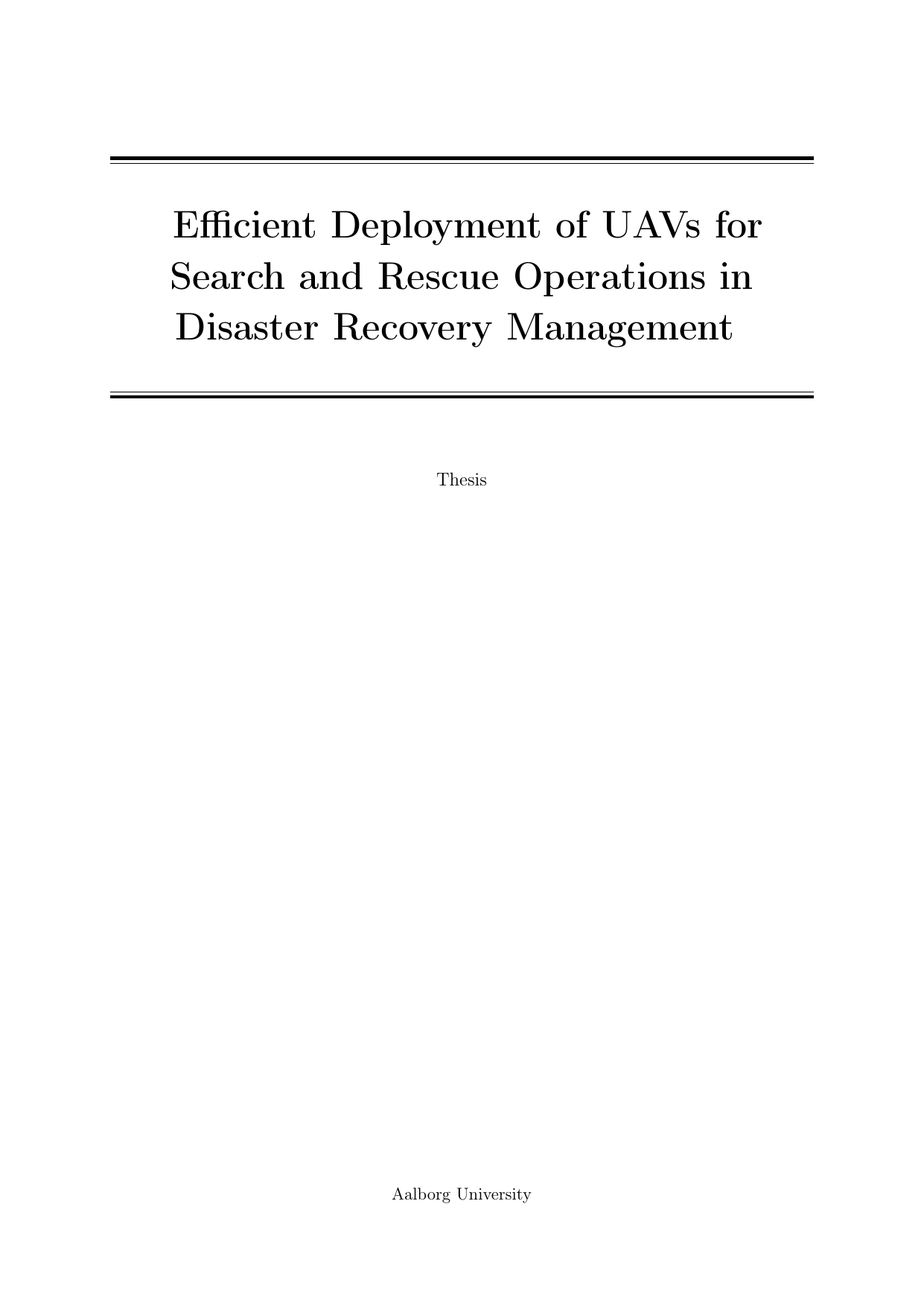
Efficient Deployment of UAVs for Search and Rescue Operations in Disaster Recovery Management
Author
Term
4. Semester
Education
Publication year
2024
Submitted on
2024-03-11
Pages
61
Abstract
Recently, Unmanned Aerial vehicles (UAVs) have gained significant attention in many fields due to their ease of deployment, flexibility, and affordability. They are widely used for disaster management, surveillance, border monitoring, battlefield monitoring, data collection, crop monitoring, communication services, emergency aid, etc. This thesis primarily investigates the role of UAVs in supporting search and rescue teams in a disaster, intending to facilitate rescue operations and provide services to victims using minimal resources. In this context, they provide real-time information that can aid decision-making. UAVs in disaster management can decrease response time, cover a wide area, and analyze the situation quickly. To provide complete rescue operations with the optimal number of UAVs and minimum energy consumption, we test four different algorithms for UAV trajectory planning, namely, Randomized Coverage Iteration (RCI), Intelligent Randomized Coverage Iteration (IRCI), scan movement, and nearest movement in the simulation environment. The performance of these algorithms is evaluated for the four different environments in terms of the number of UAVs required to cover the whole area, average total distance travelled, average energy consumption, and number of configurations. Simulation results indicate that the scan algorithm requires the least number of UAVs for coverage in all environments compared to other algorithms. Moreover, we analyze the impact of various height bounds on the coverage radius and the required number of UAVs to cover the entire area in different environments.
Documents
